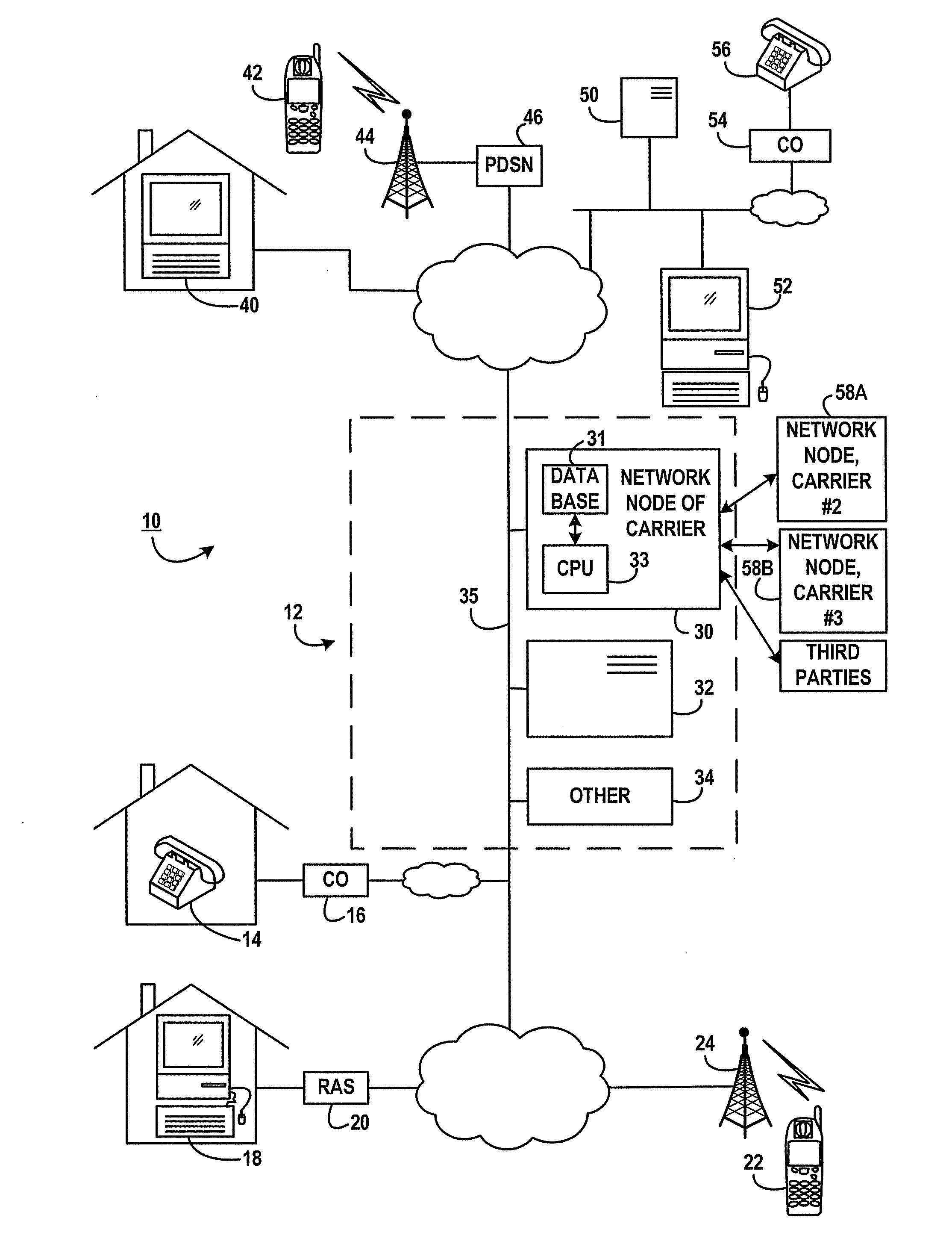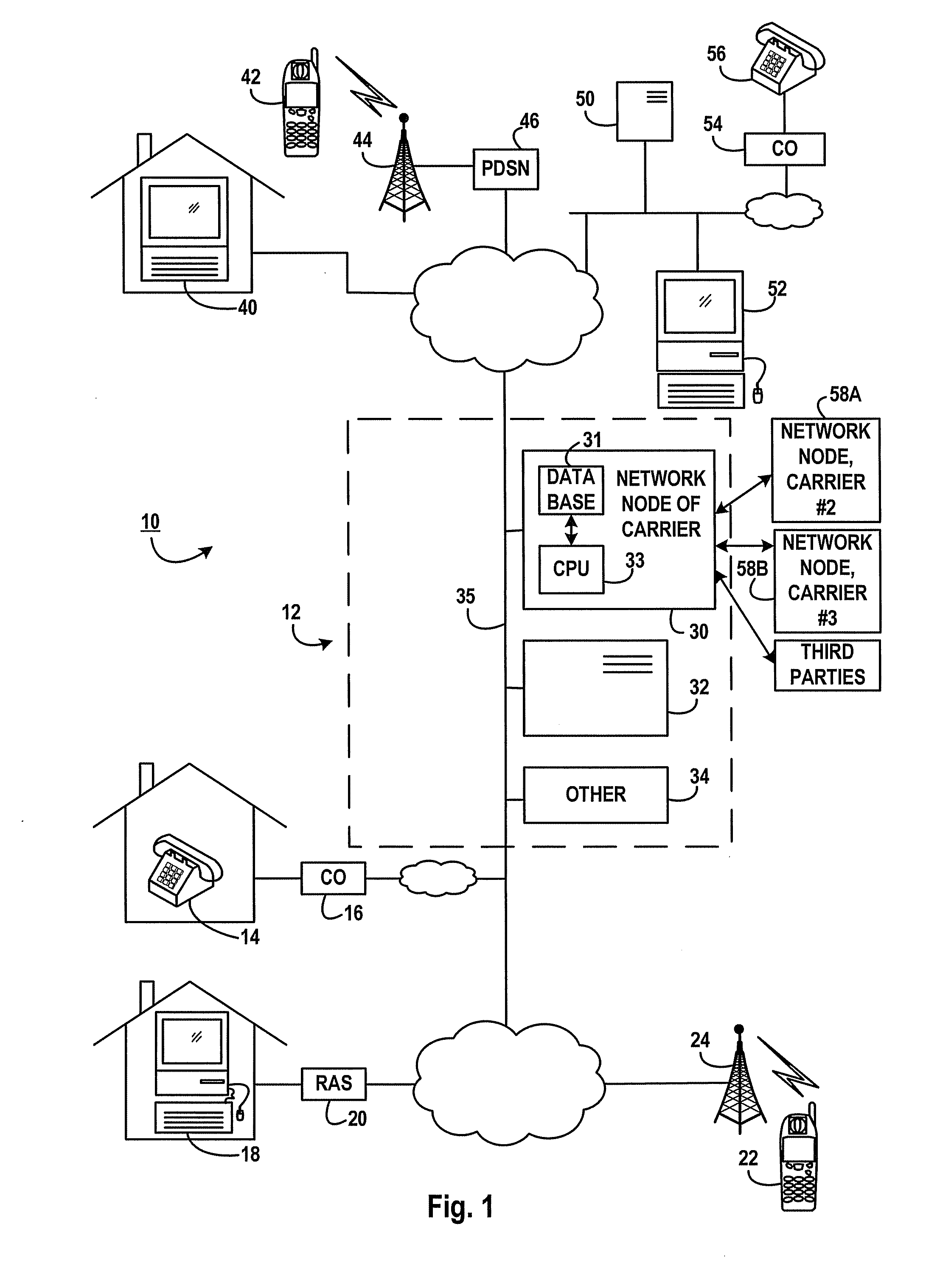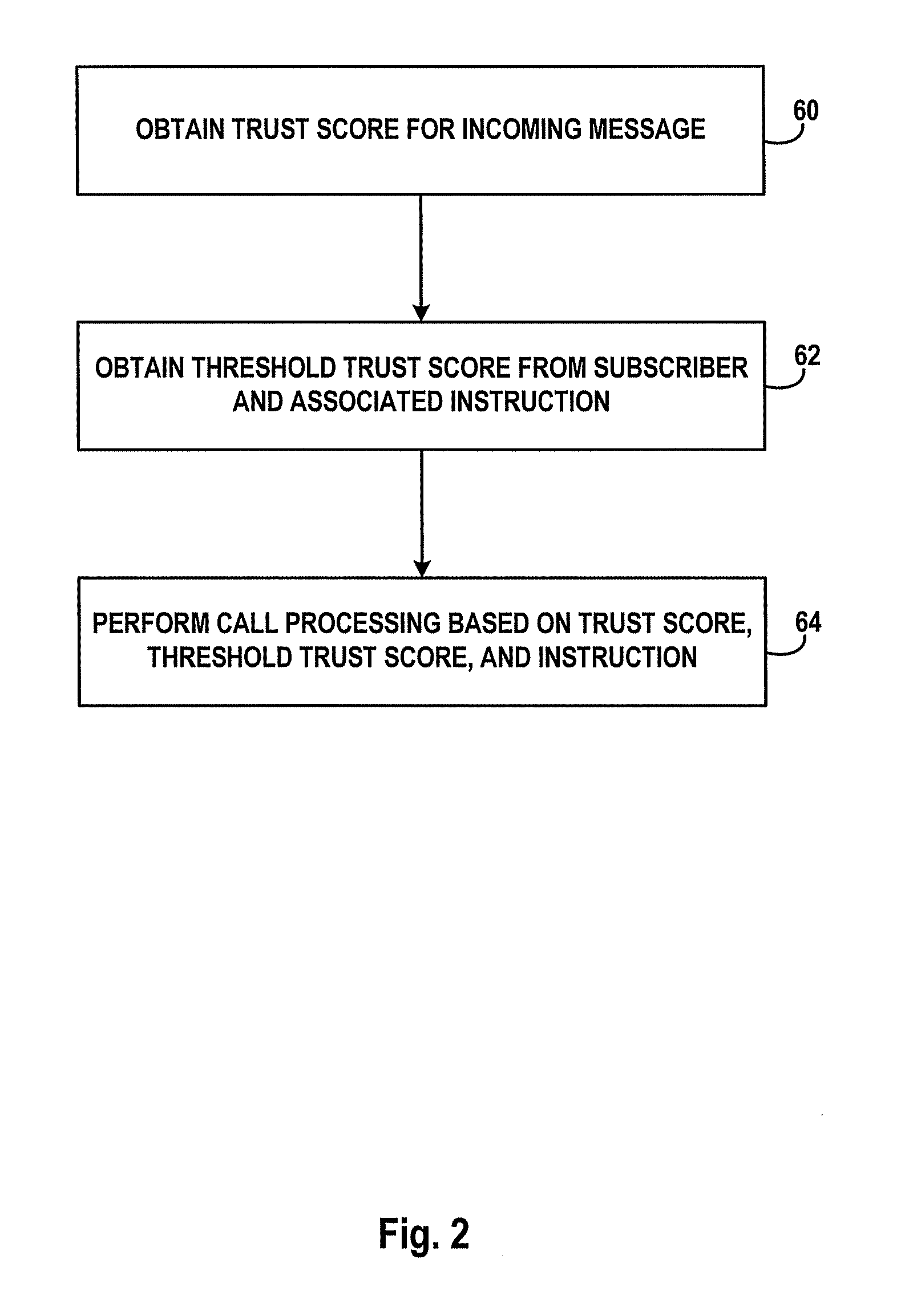Call processing using trust scores based on messaging patterns of message source
a call processing and message source technology, applied in the direction of transmission, electrical equipment, etc., can solve the problems of increasing the number of unwanted messages, recurring annoyance for many people, and unwanted calls from telemarketers, charities,
- Summary
- Abstract
- Description
- Claims
- Application Information
AI Technical Summary
Benefits of technology
Problems solved by technology
Method used
Image
Examples
Embodiment Construction
[0026]FIG. 1 is a diagram of a communication system 10 in which call processing of incoming messages is controlled or managed based on trust scores. The system 10 includes a telecommunications service provider 12 that serves a plurality of different types of subscribers, including a first subscriber having a telephone 14. The telephone 14 places calls on the public switched telephone network via a telephone company central office 16. A second subscriber could be a user with a personal computer 18 that is connected to the interne via a remote access server 20, which may or may not be operated or managed by the telecommunications service provider. A third type of subscriber could be a user of a cellular telephone 22 which receives and sends calls via a cellular telephone infrastructure shown simply as cellular base station antenna 24.
[0027]The telecommunications service provider or carrier 12 includes an infrastructure, which is shown greatly simplified in the FIG. 1. The infrastructu...
PUM
 Login to View More
Login to View More Abstract
Description
Claims
Application Information
 Login to View More
Login to View More - R&D
- Intellectual Property
- Life Sciences
- Materials
- Tech Scout
- Unparalleled Data Quality
- Higher Quality Content
- 60% Fewer Hallucinations
Browse by: Latest US Patents, China's latest patents, Technical Efficacy Thesaurus, Application Domain, Technology Topic, Popular Technical Reports.
© 2025 PatSnap. All rights reserved.Legal|Privacy policy|Modern Slavery Act Transparency Statement|Sitemap|About US| Contact US: help@patsnap.com



